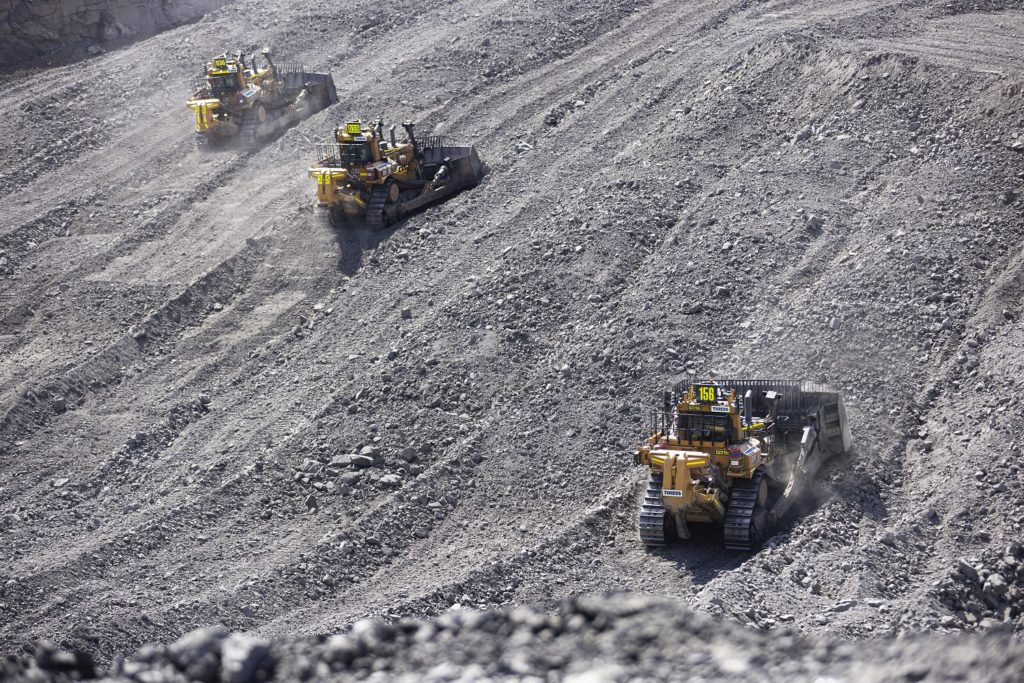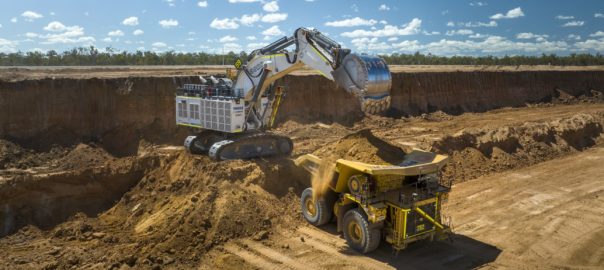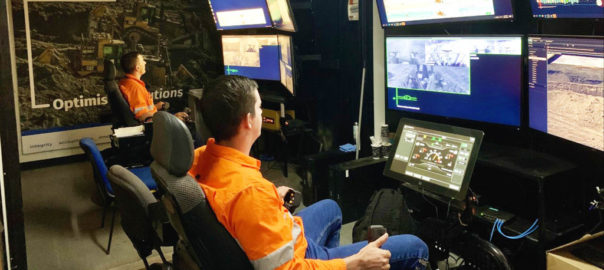Thiess may have deliberately started small with autonomy, however, 10 years into its journey, the company is now being recognised as a mine automation leader in the ever-competitive mining services space.
Whether it is drilling, dozing or haulage, Thiess has plenty of autonomy expertise to offer.
The company started off in 2013 with maintenance and service work on the autonomous haulage fleet a major producer had assembled at its iron ore operation in the Pilbara. This has since broadened out to semi-autonomous tractor system (SATS) operations at major coal mines in Australia, autonomous drilling advances using Epiroc and Caterpillar platforms and, most recently, autonomous haulage and drilling operations at Pembroke Resources’ Olive Downs Complex greenfield operation in Queensland.
Trent Smith, Head of Autonomy and Operations Technology at Thiess, says the company seeks to involve itself early on with autonomy projects to ensure benefits can be realised.
He explains: “We like to help identify the opportunity for automation, which initially involves answering two big questions: is the application suitable? And does it deliver a financial benefit to the project? If there are positive answers to both questions, we try to work with those potential clients on how to bring the vision to life.”
Thiess’ involvement in this process is extensive, looking at network options, OEM selection, the “people element” and more, according to Smith.
“Our strategy was a bit different to others, where, aside from the work at our first autonomy project in the Pilbara, we started with small pilot projects on drills and dozers,” he told IM on the side lines of IMARC 2023 in Sydney earlier this month. “This enabled us to establish some solid foundations, understand the significance of the required changes, understand what the key enablers like networks were and put support models behind those aspects.”
To date, the mining services provider has worked closely with OEMs Epiroc and Caterpillar on modifying their autonomy platforms to fit its clients’ operations to improve safety and efficiency.
“With Caterpillar, we were able to take an emerging technology platform like Cat® MineStar™ Command for drilling and ensure it was fit for purpose for the coal environment we were planning to deploy it in.
“With Epiroc’s solution, we took a mature and proven product from the iron ore environment – equipped mainly for single pass, vertical drilling in competent ground with big and open drill pads – and tailored it for a coal application. This application required the introduction of autonomous rod changing and angle drilling for drilling in varied ground within tighter working areas.
“We worked hand-in-hand with Epiroc to understand the complexities of translating the solution for this environment, utilising all of the on-board data in the early trial stages and filtering that down to identify areas of waste and opportunity that could be used by the OEM and ourselves to realise an improvement in performance within that new environment.”
This evidently worked, with the companies, earlier this year, achieving the significant milestone of drilling more than one million lineal metres at the Lake Vermont coal mine in Queensland.

Thiess is also expecting to later this year reach the same autonomous drilling milestone with Cat’s Command for drilling platform; this time at a major coal mine in New South Wales.
The company has also helped achieve an industry first at Pembroke Resources’ Olive Downs Complex, with it becoming the world’s first mining operation to deploy Command for hauling and Command for drilling solutions simultaneously.
This assignment, which moved from concept to implementation of autonomous trucks and drills within a matter of 18 months, will ultimately include the deployment of 21 haul trucks (15 Cat 794 ACs and six Cat 793Fs) and three drills (Cat MD6310s) fitted with autonomous technology. Additionally, Thiess has established a private LTE network on Pembroke’s on-site communication infrastructure, enabling the safe operation of more than 85 connected assets within the autonomous operating zone. It has also upskilled more than 280 team members to, Thiess says, support the delivery of autonomous operations at Olive Downs to enable improvements in safety, operating hours, cycle efficiency and cost.
There is potential to add Command for dozing at Pembroke Resources’ Olive Downs Complex in future years, according to Smith.
“We have built the network and control room with the anticipation that this will be used,” he said. “We are already the first company in the world to have all three Caterpillar autonomy products running at operations, but Pembroke Resources’ Olive Downs Complex would be the first operation in the world to have all three Cat autonomy products operating at one mine.”
Thiess now has six autonomy projects out in the market, all of which are performing well against industry automation benchmarks, according to Smith, who says this capability is being recognised within the mining company community and OEM space.
The company has already announced its first automation project outside of Australia – at a coal mine in East Kalimantan, Indonesia, where it will deploy autonomous drilling operations – and Smith says the company is exploring further autonomous drilling opportunities in Latin America.
As well as continuing to engage with the wider OEM market on automation options, Thiess is working on different automation applications for existing products.
“With the SATS Command for dozing product, for instance, we are looking to take the platform and work with Caterpillar to move it towards a rehabilitation application,” Smith said, referencing the Thiess Rehabilitation business the company launched last year. “The requirements in mine rehabilitation are somewhat different to standard dozer push and stockpile applications, with multi-push vectors and the ability to potentially control several small-scale projects from one centralised hub.
“This is an example of where we work with an OEM, bring our knowledge of working with the product, identify a new application for the product, and then lay out what new set of capabilities need to be addressed to meet the requirements and fulfil that market opportunity.”
The company has a track record of proposing and advancing such autonomous dozing opportunities in certain niche applications, Smith said, adding that it recently achieved the 10 million cubic metres push mark with SATS.
The first rehabilitation application for SATS could end up being at a project in central Queensland – a project the Thiess Rehabilitation team started work on last year.

Against this advancing autonomy backdrop, Smith says the company continues to be asked about combining the “decarbonisation” and autonomy pieces of the mine operating puzzle, with a staged approach typically being recommended.
“At the moment, these two (autonomy and decarbonisation) are a little bit separate, but they will converge at some point,” he said. “I imagine artificial intelligence and predictive capabilities will play a role in that – evaluating when the truck might run out of charge, when is best to pull that truck out of service for a 30-minute fast charge, etc.
“What I would say is if you have taken a step in either direction (autonomy or decarbonisation) already, you are well placed for this convergence.”
Smith offered up one last piece of advice to any company looking to take its next automation step: “Don’t forget the people and process part.”
He explained: “Most organisations know how to deliver a technology project, but I think the real value in automation is bringing the people and process along with that. Automation is a business transformation.
“We worked with Pembroke Resources’ at their Olive Downs Complex to ensure the appropriate change management process to enable automation was implemented across all business functions. Each function was reviewed to understand what needed to change to bring in automation and create a cohesive environment.
“It’s already starting to pay off at that project, where we exceeded our target of 6,500 annualised hours within two months of commencing autonomous haulage operations.”









